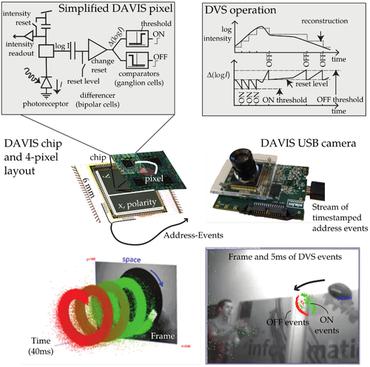Bio-inspired Gait Imitation of Hexapod Robot Using Event-Based Vision Sensor and Spiking Neural Network
Learning how to walk is a sophisticated neurological task for most animals. In order to walk, the brain must synthesize multiple cortices, neural circuits, and diverse sensory inputs. Some animals, like humans, imitate surrounding individuals to speed up their learning. When humans watch their peers, visual data is processed through a visual cortex in the brain. This complex problem of imitation-based learning forms associations between visual data and muscle actuation through Central Pattern Generation (CPG). Reproducing this imitation phenomenon on low power, energy-constrained robots that are learning to walk remains challenging and unexplored. We propose a bio-inspired feed-forward approach based on neuromorphic computing and event-based vision to address the gait imitation problem. The proposed method trains a "student" hexapod to walk by watching an "expert" hexapod moving its legs. The student processes the flow of Dynamic Vision Sensor (DVS) data with a one-layer Spiking Neural Network (SNN). The SNN of the student successfully imitates the expert within a small convergence time of ten iterations and exhibits energy efficiency at the sub-microjoule level.
PDF Abstract
